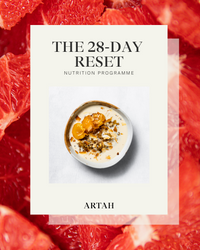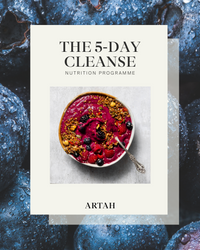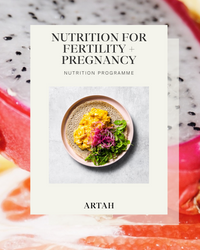4 Weight Loss Myths You Need to Ignore
Part 1
There are so many myths when it comes to weight loss that we had to split this article into two parts.
Upwards of 80% of people have tried to lose weight in the last year, and most people stick to their plan between one week and one month. With so much nutritional misinformation (alongside so many sugar-sweetened processed foods), these stats are hardly surprising. Here are the first four weight loss myths we want you to ignore.
Myth 1: You need to avoid carbs.
Like fruit, carbs are often one of the first things to go if you’re trying to lose weight. This can be particularly counterproductive for women with hypothyroidism or HPA axis dysfunction (also known as adrenal fatigue), whose conditions can be exacerbated on long-term intense carbohydrate restriction. When it comes to carbs, it’s not about elimination; think slow carbs, not no carbs. What are slow carbs? They’re real, wholefood versions of carbs that have their fibre and structure intact. This means that they aren’t instantly absorbed, resulting in a drastic rise in blood glucose and subsequently, insulin. Slow carbs include things like brown rice, lentils, legumes, quinoa, buckwheat, and jumbo oats over foods like white bread, instant oats or pastries. You can also reduce the impact of foods that would usually cause more of a spike in blood sugar with these hacks.
- Eat vegetables before a meal higher in carbs. The fibre helps to slow down the absorption of glucose, resulting in a slowing rise and fall in blood sugar.
- Try a post meal walk. Walking for just 10 minutes after a meal can help reduce glucose spikes drastically and can also benefit overall metabolism.
- Try a blood sugar support, like Metabolic Fix, whose ingredients have been shown to improve insulin sensitivity, reduce blood sugar and improve blood sugar regulation.
Myth 2: And avoid fruit, too.
Fruit is often lumped into the category of sugar alongside cakes, pastries, and sweets, even though it couldn’t be further from these foods in terms of health properties. Whilst fruit does contain natural sugars, it also contains vitamins, minerals, fibre and phytonutrients that fuel our metabolism.
Reducing sugar intake is still important and can be incredibly impactful on not only weight but energy, mood and immunity, so the first step is reducing free sugars, sweets, sugar sweetened beverages (like colas and juices), fruit juice and foods with added sugars. Look for hidden sugar in foods you may think are healthy, like yogurts, granola, energy bars, salad dressings and other packaged foods. Once you’ve done that, if you find that you’re overdoing it on fruit to compensate, try looking at the composition of your meals to make sure you’re eating for satiety. Look to balance your plate with protein, fat, and fibre first. If you do that, you’ll have less fluctuations in blood sugar and less of a desire for sweet foods. If you need some help reducing sugar and improving your metabolism, try the Metabolic Reset, a 21-day plan to kick sugar, improve energy and burn fat.
Myth 3: You need to snack to keep your metabolism high.
The idea that we should be constantly snacking is probably one of the most sabotaging nutrition myths we’re still being sold. Firstly, our bodies aren’t designed to be continuously bombarded with food. Most people don’t realise that it takes energy to digest food, so if we have a continual requirement to digest food, our metabolic energy won’t be directed elsewhere. In addition, we don’t live in a way where we can afford to focus on digestion all the time. A part of the body’s stress response is to divert energy away from digestion, so if we’re snacking throughout a stressful day, we’re less likely to digest food properly which can lead to bloating and discomfort.
Speaking of bloating, there’s also an essential regulatory function that our gut needs to perform to keep our bowels regular. The migrating motor complex (MMC) is a cyclic, recurring motility pattern in the intestines that helps ‘sweep’ things through the length of the bowel. It’s triggered by fasting and interrupted by feeding. The MMC needs a minimum of 90 minutes after the cessation of eating to be triggered and it takes about 120 minutes to complete. This means we need at least 3 hours for our gut to function optimally.
Finally, continuous snacking is going to keep insulin high. As a reminder, insulin is a hormone that is released in response to eating , and it works to direct glucose into our cells to use as energy or into muscles and then into fat to be stored. Insulin is released when we eat and takes around 3 hours to go back down to pre-feeding levels (but will vary depending on the composition of your meal). Snacking before insulin goes down means that not only are we constantly stimulating the release of insulin, which can lead to poor glucose control, a loss of metabolic flexibility and insulin resistance over time, but we are also locking away the energy in our fat stores.
The bottom line: Focus on having a full, balanced meal that will leave you satiated and avoid regular snacking. When you do snack, aim to wait for 4 hours before reaching for some fuel. If you’ve been accustomed to snacking and suffer from bloating or sluggish bowel, it may take a few snack-free weeks to rectify this. Try G.I. Fix, which has prokinetic herbs that encourage bowel movements and probiotic strains that can help combat bloating and sugar cravings.
Myth 4: You should swap to sweeteners.
One of the first things people often do when cutting sugar out is switch to artificial sweeteners, like sucralose and aspartame, or the more natural versions, like stevia or xylitol. We know that chemical sweeteners disrupt our microbiome, alter appetite signaling, can lead to weight gain in healthy individuals, and can even cause neurotoxicity, but even the more natural acaloric sweeteners, like stevia, can be a double-edged sword. Research is slowly accumulating on natural artificial sweeteners like stevia, but studies have shown that it may not be the magic bullet we once thought. Here’s why:
- It can disrupt bacterial communication in the gut, which can affect metabolism and postbiotic signaling.
- It can taste 200x sweeter than regular sugar, which can increase our desire and cravings for sweet foods.
- Stevia is often blended with sugar alcohols, which can cause bloating, nausea, impaired bowel movements and cramping.
What you can do: If you’re a diet soda junkie, it’s time to go cold turkey. Because of its effect on our appetite and cravings, you may need some blood sugar support whilst you’re in the initial phases of soda-free life. Try Energy Fix, which has Gymnema – known as ‘The Sugar Destroyer’ in Ayurveda because of its ability to help banish sugar cravings, and cayenne, which can help stimulate metabolism and energy. Try an audit of your weekly nutrition to see where you may have added sweeteners; low calorie or ‘sugar free’ flavoured foods will often have sweeteners, as will flavoured protein powders and drinks. You don’t need to avoid them forever, but having a period of time without artificial sweeteners can help restore your taste perception, improve your microbiome and help regulate appetite.












































